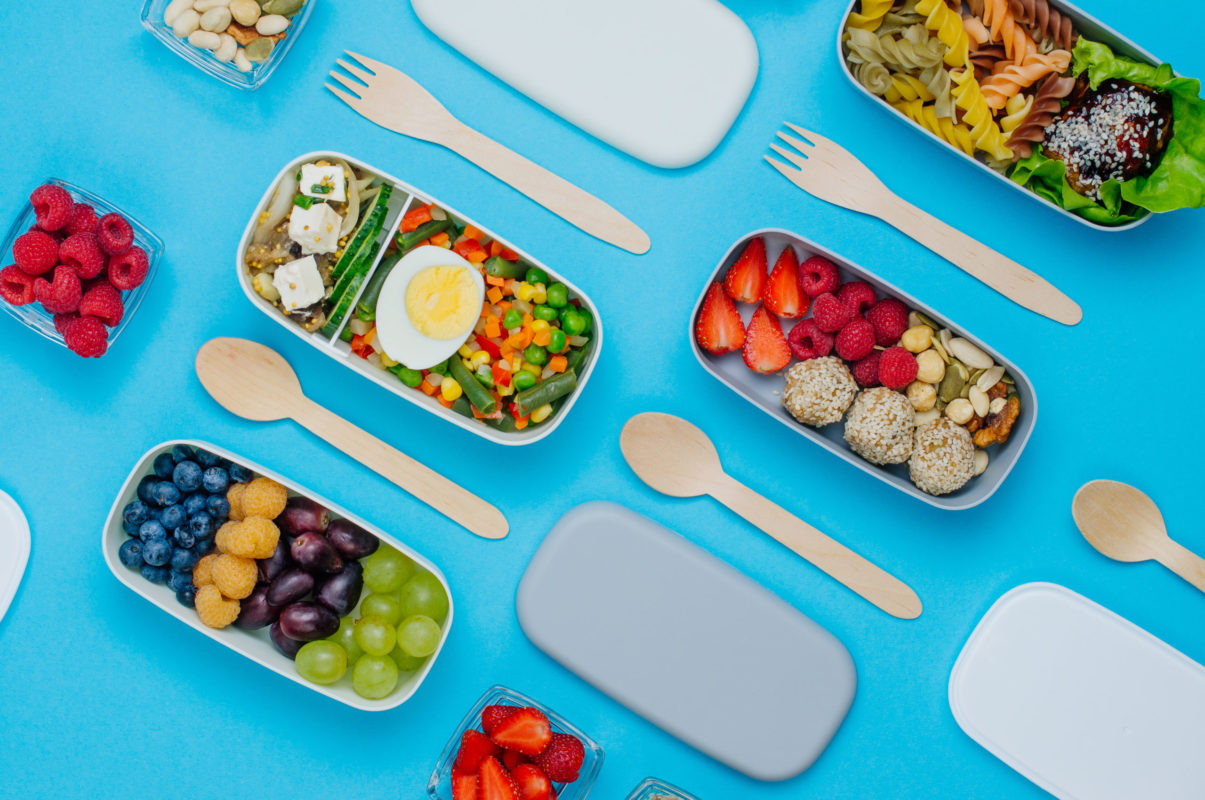Getting back into a routine when school starts can be challenging. Prioritizing a healthy lunch can be hard to do, too. But, packing a healthy lunch for your family – and yourself – should remain at the top of your to-do list.

Shaina Gross, registered dietitian
To get insight on how to start packing a healthy lunch, WellTuned spoke with Shaina Gross, a registered dietitian at BlueCross BlueShield of Tennessee.
“Life can get super busy, especially when we’re getting back into routines and schedules,” says Gross. “If we don’t set aside some time to plan, prepare, and purchase foods for meals and snacks, we may find ourselves feeling unsatisfied with what we eat.”
What is the first step to preparing a healthy lunch?
Gross: You can look at it in 3 steps: planning, purchasing, and preparing meals and snacks. It may seem overwhelming so it’s important not to look farther out than a week or a few days. And with plenty of practice, it gets easier.
Are there benefits to packing a healthy school lunch for your kids?
Gross: Planning a routine can help guarantee a lunch or snack that’s both nutritious and filling. A well planned school lunch can:
- help fuel your child’s brain
- give them energy needed to complete tasks
- fuel their body so that they can fully engage in free play and physical education
- help them develop social eating skills with their peers
- support their growth and development
How do I know what to pack in a healthy school lunch?
Gross: When it comes to packing a nutritious lunch, start with fresh, whole food as much as possible but you may consider saving a little wiggle room for their favorite treats.
- Start with a protein source. This includes nuts, seeds, seed butters, beans, chickpeas, edamame (these can be cooked at home and then chilled and stored in a lunch box), milk, yogurt including greek yogurt, cheese, cottage cheese, hard boiled eggs, rotisserie chicken, turkey, pork, beef, salmon and tuna.
- Add carbohydrate and fiber rich foods. Examples include whole wheat and whole grain breads, pastas, brown rice, and popcorn.
- Focus on fruits and vegetables next. Consider fresh, frozen, or canned fruits. Some go-to kid favorites include apples, bananas, oranges, and berries. For vegetables, choose fresh and sliced such as celery, bell peppers, lettuce, and carrots or even vegetable soup or cooked vegetables in a thermos.
- Then look at healthy fat sources. This includes avocados or guacamole, nuts and nut butters (if allowed), seed and seed butters, olives, and salmon. Some fat could also come from dairy and eggs.
- Last, be sure to include calcium rich foods. Unflavored milk, plain Greek yogurt, cheese, cottage cheese, and string cheese are great options. Non-dairy food sources include calcium-fortified cereals, beans, chickpeas, almonds, and broccoli.
How can I help my kids be excited for this healthy lunch?
Gross: Let them get involved. Let them look over the school menu and choose which days they may want to eat at school and which days they might want to pack their lunch.
Getting adventurous and trying new things is also a great way to get back a passion for mealtime. Look for inspiration on YouTube, Pinterest, or simply search “kids lunch ideas” for great ideas.
You can also use this time as an opportunity to research different recipes and lunch box ideas, and even try out new culinary skills (safely, with adult help) at home.
What tips can adults use to help themselves pack a healthy lunch?
Gross: Even if you’re working from home, packing a lunch the night before can take the stress and worry out of lunch time. The same basics that apply to a kid’s lunch box can apply to adults too. Start with a lean protein source, add complex carbs, fruits, vegetables, and healthy fats.
What other tips should I keep in mind?
Gross: Get a refillable water bottle and send it with your child to school and take it with you during your workday. Water is the best option for meeting hydration needs.
Also, remember food safety. This means keeping cold food cold and hot food hot. Foods like meat, cheese and yogurt can be safely held at room temperature for no more than two hours. So, if it will be longer than two hours before you or your child eat lunch, consider an insulated lunch box with a freezer pack.
For hot foods, consider purchasing a thermos to pack up hot foods like soup and pasta. In the morning, get the food piping hot, then fill the thermos and seal the lid tight immediately.
More tips from WellTuned
Get more information about specific health terms, topics and conditions to better manage your health on bcbst.com. BlueCross BlueShield of Tennessee members can access wellness-related discounts on fitness products, gym memberships, healthy eating and more through Blue365®. BCBST members can also find tools and resources to help improve health and well-being by logging into BlueAccess and going to the Managing Your Health tab.


